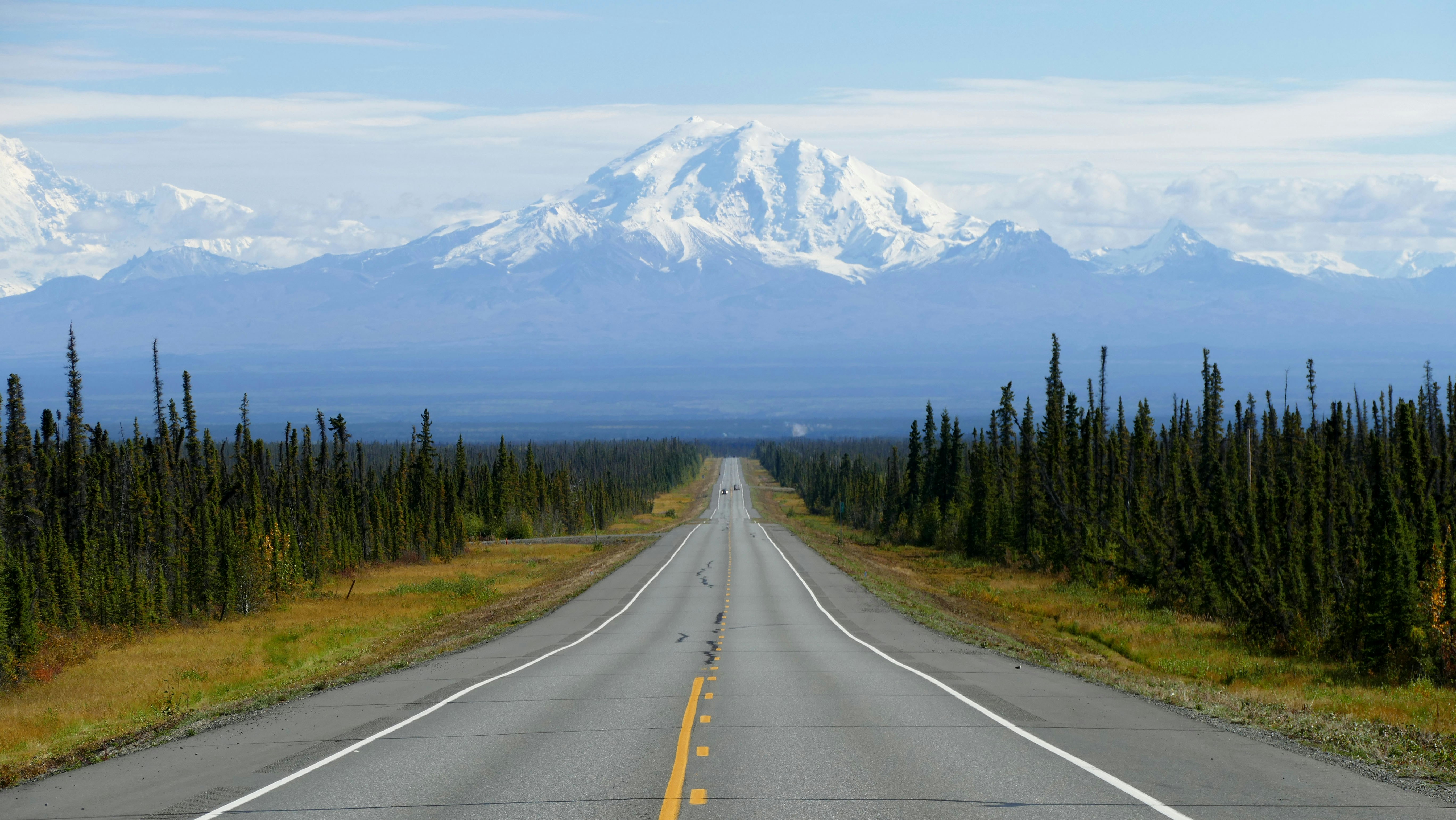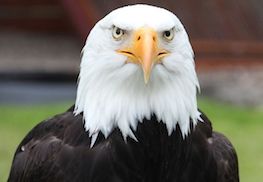Last Updated: Dec 17, 2025
Bald eagles are named for their white heads, which are conspicuous next to their dark brown bodies. They were named by American colonists when bald (or ‘balled’) meant white, not hairless. Their feet, irises, and beaks are bright yellow; beaks are also large with hooked ends. Bald eagles grow quite large, between 8 to 14 pounds with a wingspan of up to 7.5 feet. As with many raptors, females are larger than males.
Alaska’s environment is ideal for these birds, who prefer wetland habitats such as seacoasts, rivers, large lakes, marshes, and other large bodies of open water with an abundance of fish. Alaska has more bald eagles than any other state, ringing in at a whopping 30,000 birds! (There are about 70,000 in all of North America, including Alaska.)
In the late 20th century, bald eagles were on the brink of extinction in the US––in Alaska there was even a bounty put on them due to complaints from the salmon industry and coastal fox farmers. Over the next 36 years, 120,195 eagles were killed in Alaska. The claims that eagle predation was competing with the livelihood of those behind the bounty were eventually discredited, and the bounty was removed in 1953.
Alaska’s bald eagles were further protected when we became a state in 1959, which brought with it the Bald Eagle Protection Act of 1940. Populations recovered fairly quickly throughout the US and in 1995 they were moved to the ‘threatened’ list, and then in 2007 they were removed altogether from The List of Endangered and Threatened Wildlife.
Bald eagles are monogamous and they mate for life, often returning to the same nests year after year. Each time they return they add more sticks, twigs, and grass––due to this, and the bird’s large size and wingspan, their nests are huge: up to 20 feet deep and 10 feet wide! They come in pairs of eggs, though only one eaglet usually survives into adulthood.
It takes 35 days for the eggs to hatch, and then the young remain in the nest for another 10-12 weeks, until they’re able to fledge, or fly from the nest. Eagles mate at 4 or 5 years old and can live up to 30 years in the wild. These majestic birds have been the national symbol of the United States since 1782, and a large part of Native Alaskan spirituality and culture for much longer.
Alaska Shore Excursions offers 3 eagle-oriented tours, 2 in Ketchikan and 1 in Sitka. The Ketchikan Rainforest Wildlife Center and Eagle Sanctuary is part scenic drive, part rainforest hike, and part up-close eagle experience. Or, while in Ketchikan, take a boat ride to see eagles, their nests, and other Alaskan wildlife galore via our Ketchikan Lighthouse, Totems & Eagles Excursion.
Sitka offers its Bald Eagle Center, where volunteers rescue birds, provide them with rehabilitative care and, ideally, are able to release them back into the wild.

 Mendenhall Glacier
Mendenhall Glacier Whale Watching
Whale Watching Dog Sledding
Dog Sledding Salmon Bake
Salmon Bake Helicopter
Helicopter Kid-Friendly
Kid-Friendly Kayak
Kayak Adventure
Adventure Train
Train Yukon
Yukon Rafting
Rafting Misty Fjords National Monument
Misty Fjords National Monument Boat
Boat Fishing
Fishing Bear & Wildlife
Bear & Wildlife Animal & Wildlife
Animal & Wildlife


